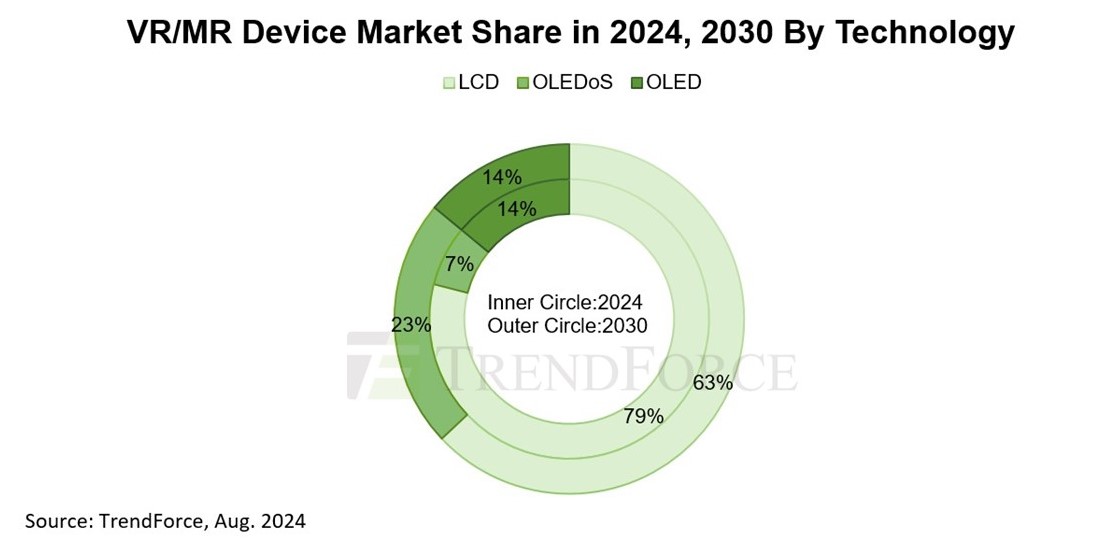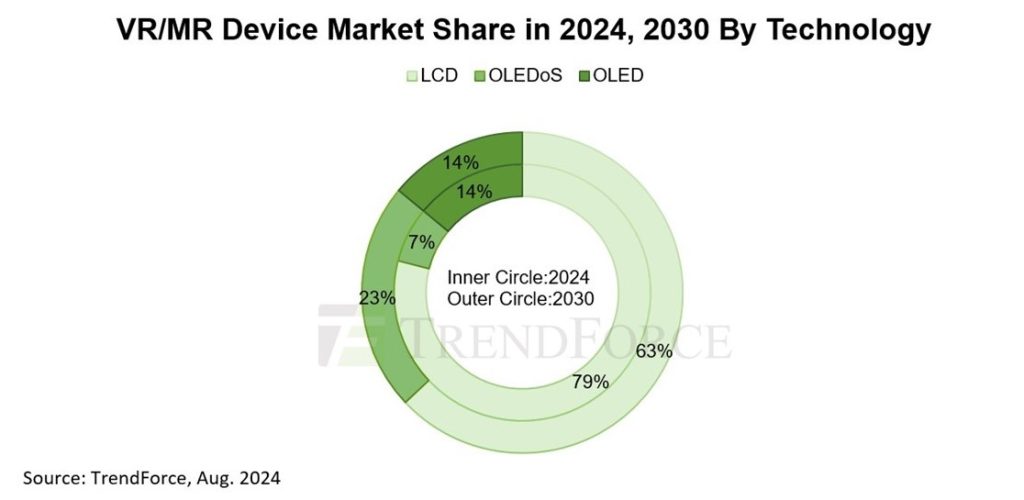
OLEDoS will dominate the high-end VR/MR market, with its technological share rising to 23% by 2030, while LCD will continue to occupy the mainstream market, holding a 63% share in near-eye displays.
The collaboration between Sony and Apple on the Apple Vision Pro has established OLEDoS as dominant in the high-end VR/MR market. This partnership highlights the industry’s pursuit of high-resolution VR/MR devices and has increased attention on OLEDoS.
OLEDoS employs CMOS and top-emitting OLED components to achieve higher luminous efficiency, pushing the basic resolution of OLEDoS products to over 3,000 PPI. TrendForce notes that the complexity of CMOS manufacturing and its lower yield rates result in high production costs for OLEDoS displays, which limit its penetration growth.
Chinese manufacturers such as SeeYa and BOE are also investing in OLEDoS which is expected to drive the future expansion of the technology in the VR/MR device market. TrendForce estimates its market share will increase from 7% in 2024 to 23% in 2030.
VR/MR devices are defined as near-eye displays that achieve an immersive experience through a single display. Devices emphasising transparency and the integration of virtual and real-world applications are classified as AR devices.
In the mainstream near-eye display market, LCD technology remains dominant due to Meta’s focus on cost-effectiveness. However, as these devices continue to pursue higher resolution and image quality, LCD products—with their 1,200 PPI—will face competition from other technologies. TrendForce estimates that in 2024, the shipment volume of LCD near-eye display products will be 6.8 million units, a 5.6% decrease compared to 2023.
TrendForce points out that there is still room for optimisation in the complex components of LCD. For example, improving liquid crystal materials to reduce dizziness and upgrading backplane technology to boost resolution beyond 1,500 PPI.
BOE has invested heavily in the application of LCD in near-eye displays, with continuous updates and iterations of LCD display specifications in VR/MR devices, ensuring this technology maintains strong competitiveness in the mid-to-low-end market. TrendForce forecasts that LCD technology will hold a 63% market share by 2030.
Emission material cannot fully cover the screen after deposition, which exacerbates the screen door effect when using VR/MR devices.
TrendForce indicates that OLED is less competitive than OLEDoS in the high-end market and cannot match the cost-effectiveness of LCD products.
The application of OLED in the VR/MR market relies heavily on specific manufacturers, limiting its long-term penetration rate.
TrendForce estimates that from 2024 to 2030, the market share of OLED in the VR/MR market will remain between 13% and 15%.







